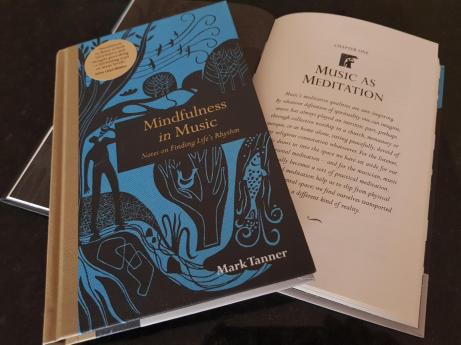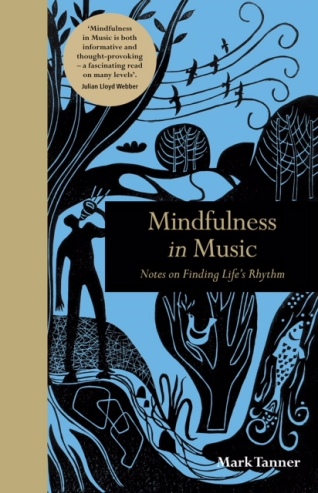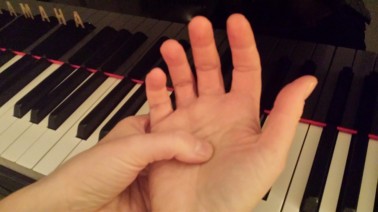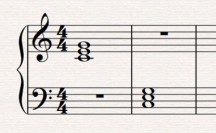This week my guest writer is Irish composer and music examiner, John McLachlan. A prolific composer, John has written for many genres, including a substantial collection of pedagogical piano works, some of which have been selected for inclusion in the syllabus of the Royal Irish Academy of Music. I asked him about his music and his compositional process. Over to John…
 I began writing pedagogical piano pieces some decades back when I was very busy teaching piano and trying to finish a PhD in musicology, as well as juggling piano practice. This didn’t leave much time to write big serious pieces, and so when students were absent I would quickly scribble a simple piece, with the original idea of bringing the harmonic practice into the modern era. The PhD was on Boulez, Xenakis et al, and my serious music is fairly complex. I was concerned about what young musicians learn and whether it sufficiently stretches their understanding of more modern adventures in harmonic and rhythmic practice.
I began writing pedagogical piano pieces some decades back when I was very busy teaching piano and trying to finish a PhD in musicology, as well as juggling piano practice. This didn’t leave much time to write big serious pieces, and so when students were absent I would quickly scribble a simple piece, with the original idea of bringing the harmonic practice into the modern era. The PhD was on Boulez, Xenakis et al, and my serious music is fairly complex. I was concerned about what young musicians learn and whether it sufficiently stretches their understanding of more modern adventures in harmonic and rhythmic practice.
I showed a few scratchily handwritten scores to Deirdre Doyle, who was then head of keyboard at the Royal Irish Academy of Music in Dublin, where I was studying, and she said: “Let’s see more of those”.
Things evolved from there. I got positive feedback from other wonderful piano teachers at the RIAM such as Ray Keary, and I changed the focus from being a fiercely revamped post-war version of Bartok to being within the parameters of specific piano grades: I learned to dial down (but not discard entirely) the challenging harmony, rhythm and structure of the pieces.
I was also very much aware as a teacher how the material for beginners varies from nice and clever pieces to dry-as-dust exercises thinly disguised as ‘fun pieces’. But when you try to write music for absolute beginners you soon see how hard it is: it is a great exercise and a big challenge for any composer to stick within a few bars and a couple of five-finger positions, yet come up with something that sounds in any way inspiring! However, models such as Kabalevsky, Grieg and Schumann often show how good pieces can be constructed from a starting point of technical ease, focused in one useful technical area, and with a bit of imagination can really be appealing to play while staying within the technical level set out at the start.
I was also struck by how few early pieces would appeal to late or adult beginners, and how very anodyne they can be, compared, for example, to stories and poetry written for children, which can be ghoulish or bloodthirsty! This is why sometimes my pieces have titles such as ‘the Guillotine’, ‘Caves’ and ‘Night Prowler’. I have a piece called ‘Chop Chop’ which has been selected for Preliminary grade a number of times, the piece was going to be one of those with words written under the tune: “Willy built a guillotine, Tried it out on sister Jean, Said Mother as she got the mop, “These messy games have got to stop!”. But I shrank back from including the words on the score in the end, as I had not asked for the author’s permission, and I figured there was no way the RIAM would use it in that format anyway. But I don’t want to give the idea that my music is all on the dark side! I also found inspiration from sun-soaked travels in Greece with ‘Evening at the Harbour’ and ‘The Meltemi’ (this is a wind that cools the fierce summer heat on Crete). ‘Wheelies’ is about childhood joy in messing about on a bicycle.
Initially, I gathered all the pieces together into a volume that I titled “From the Strings of a Rainbow” (inspired by a poem from St-John Perse), offering a collection of pieces from elementary level to advanced. Then some time later I pared back the difficulty with a volume I called “Fifteen Easy Miniatures”. Just this year I reassembled the various pieces, including many written after those volumes, into three new volumes: ‘First Flights: ’14 playful pieces for piano beginners; ‘Further Flights; 15 easy repertoire pieces from grades 1 to 5, and Lighter and Darker: 5 repertoire pieces above grade 5’. There are a number of pieces from the early volumes that I have discarded. The pieces are all available individually and/or gathered together in these volumes.
How do I go about writing such pieces? There are almost as many answers as there are individual pieces, but I will try to answer this. In the case of two of the African Melodies I was inspired by the technical control of the travelling five-finger hand positions seen in many of Kabalevsky’s “24 Pieces for Children”, and also by the general mood of some music by Kevin Volans, the South African/Irish composer who was teaching me at the time. The pieces use only pentatonic scales, a further limitation. “Hop, Skip and Tumble” also relates in that way to Kabalevsky’s models.
Other simpler pieces in one position sometimes use artificial or non-western scales such as the Hungarian minor or the hirajoshi pentatonic to give the ears something fresh (examples: “A Little Japanese Tune” and “The Guillotine”). Archaeopteryx on the other hand is a very advanced essay on what can arise from the octatonic scale, which starts with superimposed hand positions, the kind of positioning seen in Debussy’s Mouvement (and countless other pieces). It is in strict Sonata form and the development sees some breakdown of the octatonic structure.
I hope that all doesn’t make it sound boring or technocratic, the truth is, I always compose in the classic “flow state”. Structures such as scale or formal plans merely help the enjoyable aesthetic craziness to fit more easily together and that speeds up the writing process immensely. I often tried to achieve some unusual forms or phrase structures, but to slip them in a way that is not obvious to the ear. But there are also pieces that are more straightforward, with blues or jazz influences. “Ice-Dance” is just a jazz improvisation on quartal chords (chords built up from fourths rather than the usual thirds).
In “An Raibh Tú ag an gCarraig?” the top line is a very old Irish tune which I noticed was in a hexatonic scale (as in the first 6 notes of major), where the other 6 notes of the 12 make a mirror set of the same scale a tritone away. I immediately decided to use those notes in the left hand to compose a free left hand accompaniment or counter-melody. I soften the dissonance by choosing only consonant combinations between the hands. I was very happy with that, and in fact this way of ordering the 12 pitches crept into parts of a 12-minute piece I wrote for organ and later for orchestra called “Here be Dragons”. So it is evident that writing all the simple pieces did have an effect on my more serious art music output, where I devised for a while a cross between simplicity and complexity which proved very fruitful between 2001 and 2011 or thereabouts.
All composing can lead to other composing so the best advice for composers is to keep writing as often as possible, as only then can issues and solutions flow from one piece to the next in your output. Also listening to and playing great music is vital, and figuring out how it works (by thinking and analysing)—all this is how piece X leads to piece Y.
Pieces selected for inclusion in the Royal Irish Academy of Music’s examination syllabus: Little Reverie, Tranquillity, African Melody I, African Melody II, Night Prowler, The Curious Cat, Chop Chop!, Melody for K, Ice-Dance, and Hop, Skip and Tumble.
You can purchase John’s music by clicking here, and can hear selected piano pieces by clicking on the links below:
My Publications:
For much more information about how to practice piano repertoire, take a look at my two-book piano course, Play it again: PIANO (Schott). Covering a huge array of styles and genres, 49 progressive pieces from approximately Grade 1 – 8 level are featured, with at least two pages of practice tips for every piece. A convenient and beneficial course for students of any age, with or without a teacher, and it can also be used alongside piano examination syllabuses too.
You can find out more about my other piano publications and compositions here.
from Melanie Spanswick https://ift.tt/2KcYy9Z























